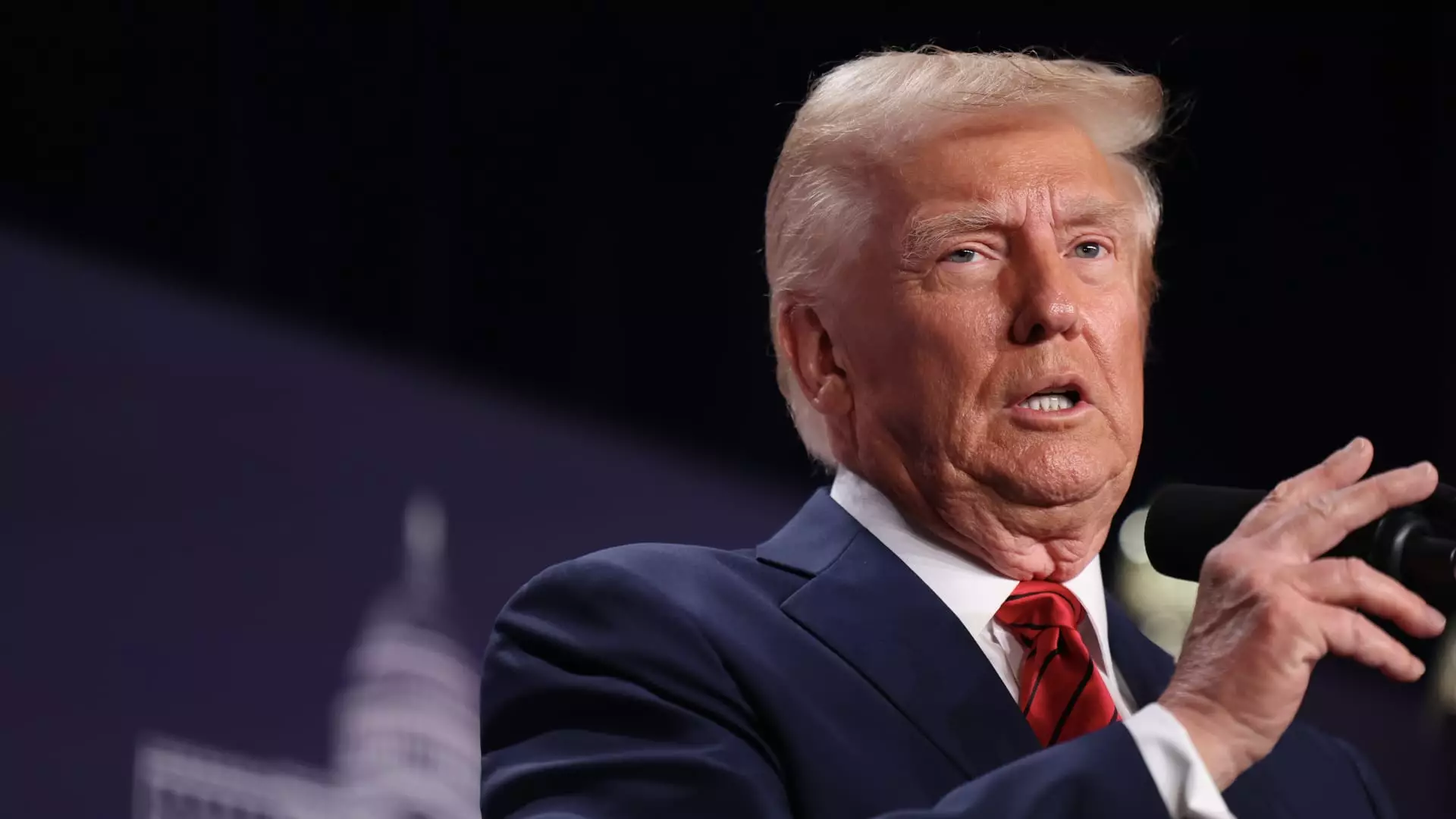The recent discussions in the U.S. government regarding the imposition of tariffs on goods imported from Canada, Mexico, and China have elicited both interest and concern among economists and consumers alike. As President Donald Trump has articulated his intention to impose significant tariffs, the potential ramifications for consumers and the economy as a whole continue to emerge as a central topic of debate. The implementation of such tariffs, set to commence on February 1, signals a pivotal moment in U.S. trade policy, with the potential to impact millions of American households.
At its core, a tariff is a tax levied on imported goods, leading to increased costs for businesses that rely on foreign products. Consequently, many of these companies are likely to transfer these additional costs to consumers, resulting in higher prices for everyday items. Economists like Mary Lovely from the Peterson Institute for International Economics have underscored the inherent downsides of tariffs. The overarching sentiment among financial analysts is that while tariffs might generate revenue for the government, the burden will ultimately fall on American consumers, leading to diminished purchasing power and a limited selection of products.
In 2022, the U.S. imported roughly $536 billion worth of goods from China, $455 billion from Mexico, and $437 billion from Canada. These figures illustrate not only the significance of these trade relationships but also the profound impact that changing tariff structures can have on consumer behavior and market dynamics. The immediate effect of these tariffs is anticipated to be an increase in the prices of consumer goods, particularly items directly imported from these countries, such as electronics, clothing, and food products.
Despite the looming tariffs, there remains a degree of uncertainty regarding which products might be exempt from these taxes. President Trump has suggested that certain categories of goods, like Canadian oil, could fall outside the scope of tariffs, which may help mitigate some cost increases for consumers. However, ongoing discussions within the White House indicate that exemptions will be determined on a case-by-case basis, which adds further complexity to the scenario. Mark Zandi, chief economist at Moody’s, posits that such exemptions could serve as a mechanism for lessening the financial strain on American households but introduces an element of unpredictability regarding market pricing.
Looking forward, these initial tariffs may not represent the end of the story. During his campaign, Trump expressed the possibility of broader tariffs on all imports, with particularly high rates on products from China. The implications of these proposed measures are staggering; estimates suggest that a 20% universal tariff could statistically raise household expenses by approximately $3,000 by 2025. Such figures prompt significant consideration as to whether these policies are ultimately in the best interest of U.S. consumers and the economy.
Critics of the tariff strategy assert that the repercussions extend far beyond consumer prices. A report from the Committee for a Responsible Federal Budget estimates that tariffs may produce around $1.3 trillion in revenue by 2035. However, this revenue comes at a significant cost; it is estimated that the tariffs could shrink the U.S. economy by billions, particularly if retaliatory measures from foreign nations come into play. The potential for a trade war—characterized by an escalation of tariffs—could lead to a downturn in U.S. exports, subsequently threatening American jobs and the stability of various industries.
Moreover, the argument that tariffs can lead to job creation has been called into question. Many economists, including those at the Peterson Institute, highlight the disparity between jobs created in tariff-protected industries versus jobs potentially lost in those sectors that rely on imported materials. For instance, the steel industry might see a minor increase in employment; however, the collateral damage is substantial, with estimates suggesting that for every steel job, numerous jobs in industries that use steel as an input could be adversely affected.
Another crucial area of concern is the long-term quality and availability of consumer choices. As tariffs impose higher costs on imported goods, American consumers may find themselves confronted with limited options and potentially inferior alternatives, resulting from diminished competition. This issue is particularly relevant for goods where the U.S. does not have robust domestic production capabilities, leading to scenarios where consumers have fewer choices and higher prices for essential goods.
While the economic rationale behind tariffs may seem logical on the surface, the complex and multifaceted ramifications highlight a stark reality. From direct costs to consumers to the broader implications for international trade and job markets, these tariffs warrant thorough examination and debate. Policymakers must consider the balance between short-term gains and long-term consequences, as the ramifications of these trade policies extend well beyond mere statistics and economic forecasts, impacting the daily lives of millions of American families.

Leave a Reply